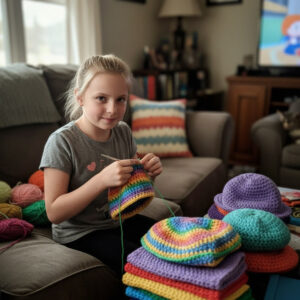For months, a young mother couldn’t shake the feeling that something was wrong inside her home. Her husband, once affectionate and engaged, had become distant and distracted. The laughter that used to fill their evenings had faded, replaced by silence and disconnection. He spent long hours scrolling through his phone, barely responding to her or interacting with their two-year-old daughter. At first, she told herself it was stress or fatigue, but the growing emptiness between them became impossible to ignore.
Though he remained gentle with their daughter, subtle changes in the little girl’s behavior deepened the mother’s worry. Once cheerful and talkative, the child had grown quiet, hesitant, and easily startled. Searching for answers rather than conflict, the mother decided to install a small hidden camera in the living room — not out of anger, but out of love and concern. She wanted to understand what was happening when she wasn’t present, to see what her words alone couldn’t uncover.
That evening, she watched the footage with a mix of fear and hope. At first, everything seemed perfectly normal: her husband sitting on the couch, her daughter playing with toys. But gradually, she noticed the silence between them — the emotional vacancy in his expression, the way their daughter seemed uncertain, glancing toward him as if seeking connection that never came. There was no shouting, no cruelty — just distance so heavy it filled the room. In that quiet absence, she saw the truth she had been sensing all along.
The discovery broke her heart but also gave her clarity. Instead of lashing out, she approached her husband calmly and asked for honesty. Over time, with patience and counseling, they began to rebuild what had quietly eroded. The footage, painful as it was, became the moment that saved them. It reminded them both that love requires presence — that even silence can wound, and attention can heal. By trusting her instincts, the mother helped her family rediscover the connection they had almost lost.




